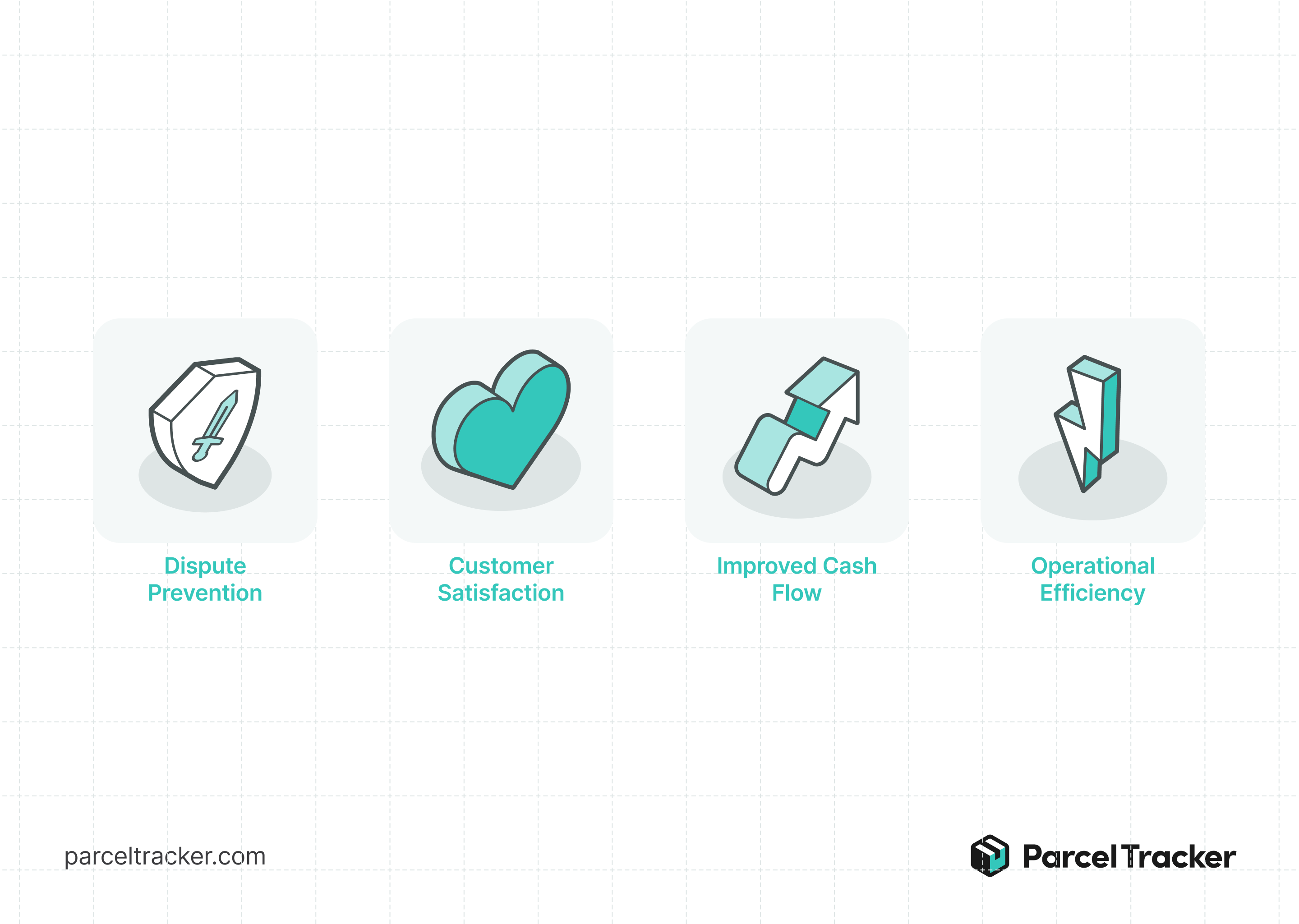Proof of Delivery (POD): Methods, Benefits, and Preventing Disputes

Organizations that adopt digital solutions for their deliveries have been shown to reduce customer disputes by up to 80%. This is a result of a process called Proof of Delivery (POD).
POD is the irrefutable evidence that a package has successfully reached its destination. It could be a digital signature, a timestamped photo, or a geotagged scan. By transforming a simple drop-off into a verifiable, secure record, POD not only protects both the sender and the recipient from false claims but also serves as the foundation of a reliable and efficient logistics system. It is a powerful tool for restoring trust and clarity in the final, most vulnerable stage of a delivery.
What is Proof of Delivery (POD)?

POD is a critical component of supply chain, logistics, and parcel management processes. At its core, it's a verification step that confirms a shipment has been successfully delivered to its intended recipient. This confirmation can take various forms, from a simple signature on a paper document to a complex electronic record with GPS coordinates and timestamps.
The primary purpose of POD is to provide a clear, indisputable record of the transfer of goods, which is essential for invoicing, inventory management, and dispute resolution.
What are the Methods of Proof of Delivery (POD)?
The method of obtaining a POD has evolved significantly with technology. Here are the most common methods used today:
- Paper-Based POD: This is the traditional method, where a physical document, often a delivery note or manifest, is signed by the recipient upon delivery. While simple and widely understood, it is prone to loss, damage, and can be inefficient for record-keeping.
- Electronic Proof of Delivery (ePOD): This modern method uses digital technology, such as handheld devices, mobile apps, or scanners. The recipient can sign digitally on a screen, and the system instantly captures not only the signature but also other crucial data points like the time, date, and location of the delivery. This method streamlines the process and provides a more secure and accessible record.
- Other Digital Methods: Beyond a simple signature, advanced POD systems can utilize other forms of verification, including:
- Photos: A picture of the delivered item at the destination.
- GPS Tracking: Geotagging the exact location of the delivery.
- Barcode Scanning: Scanning the barcode of the delivered item to confirm its arrival.
- Recipient's ID: Scanning a recipient's driver's license or ID card for high-value deliveries.
What are the Benefits of a Robust POD System?

Implementing a reliable Proof of Delivery system offers significant advantages for businesses of all sizes. The benefits extend beyond simply confirming a delivery and impact multiple aspects of operations.
- Dispute Prevention and Resolution: A primary benefit of a POD is its ability to prevent and resolve delivery disputes quickly. With a clear record of the delivery, including the time, location, and recipient's signature or confirmation, it becomes difficult for a customer to claim they never received the package.
- Enhanced Customer Satisfaction: A streamlined POD process ensures accuracy and transparency, which builds trust with customers. They can be confident that their order has been delivered, and any questions can be answered with concrete evidence.
- Improved Cash Flow: A verified POD is often a prerequisite for invoicing and payment. By quickly and accurately capturing delivery confirmation, businesses can accelerate their billing cycle and improve cash flow.
- Operational Efficiency: Electronic Proof of Delivery (ePOD) systems eliminate the need for manual data entry and handling of physical paperwork. This reduces administrative overhead, minimizes errors, and allows for real-time tracking of delivery statuses.
- Accountability and Performance Tracking: POD data provides valuable insights into the performance of carriers, drivers, and the entire logistics chain. Businesses can analyze delivery times, success rates, and other metrics to identify bottlenecks and improve overall efficiency.
How to Prevent Disputes with Effective Proof of Delivery?

To effectively prevent disputes, businesses must ensure their POD process is robust and comprehensive.
- Use Detailed and Clear Documents: Whether paper or electronic, the POD should clearly state the order number, item description, quantity, and the delivery address.
- Capture Comprehensive Data: Don't just rely on a signature. A good POD system should also capture the date, time, and name of the person who accepted the delivery. For ePOD, include GPS coordinates and photos of the delivered package if possible.
- Implement a Standardized Process: All employees and third-party logistics partners should follow the same procedure for obtaining and recording POD. This consistency reduces confusion and errors.
- Digitize and Centralize Records: An electronic system allows for easy storage and retrieval of PODs. This is crucial when a dispute arises, as you can quickly access the necessary documentation.

Proof of Delivery is a basic tool for ensuring accountability, improving efficiency, and building trust with customers. By understanding the different methods and implementing a comprehensive system, organizations can protect themselves from disputes, optimize their logistics, and enhance their bottom line.
To learn how a digital delivery log can streamline your POD process and protect you, explore the features of Parcel Tracker's solution.






